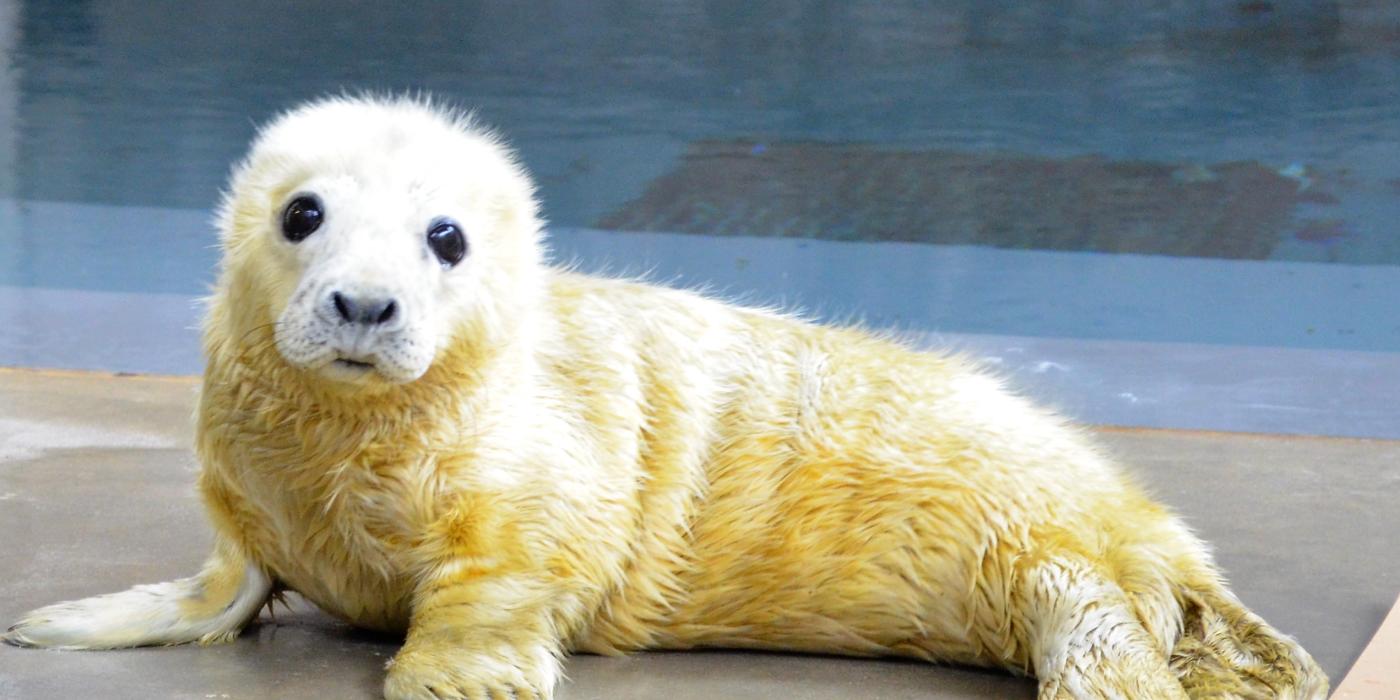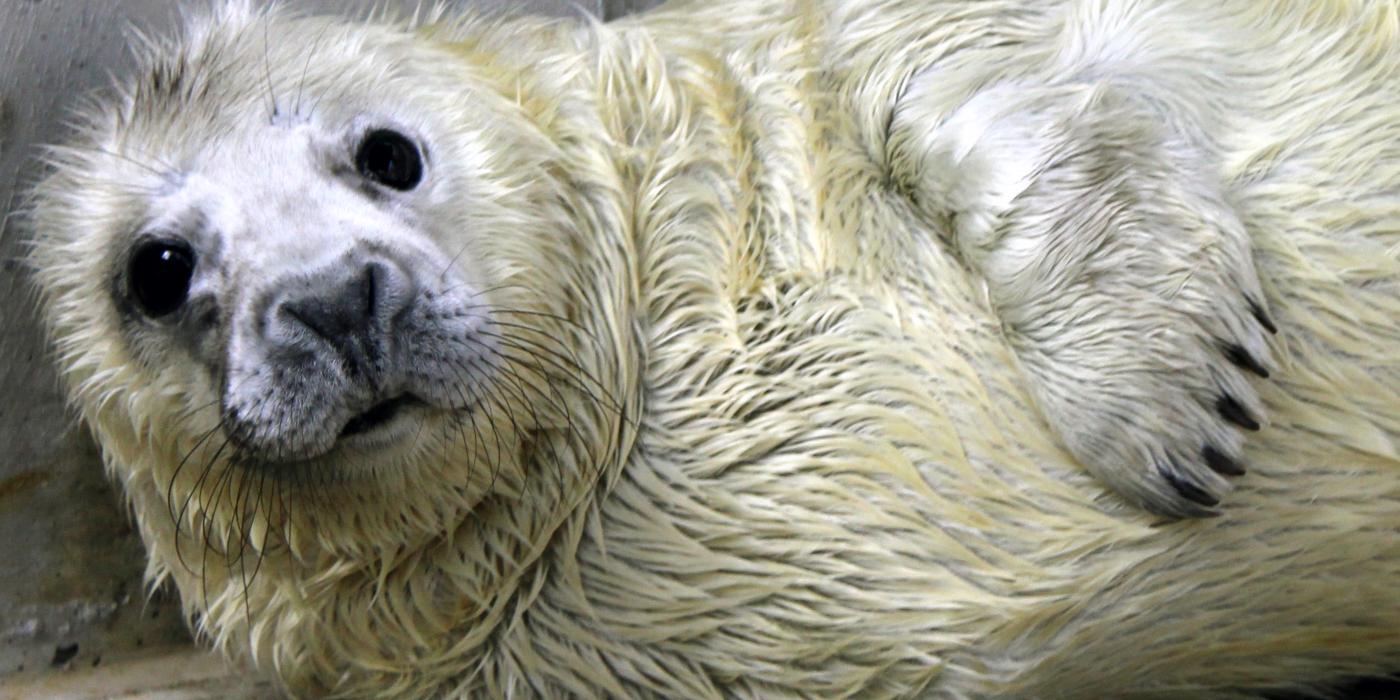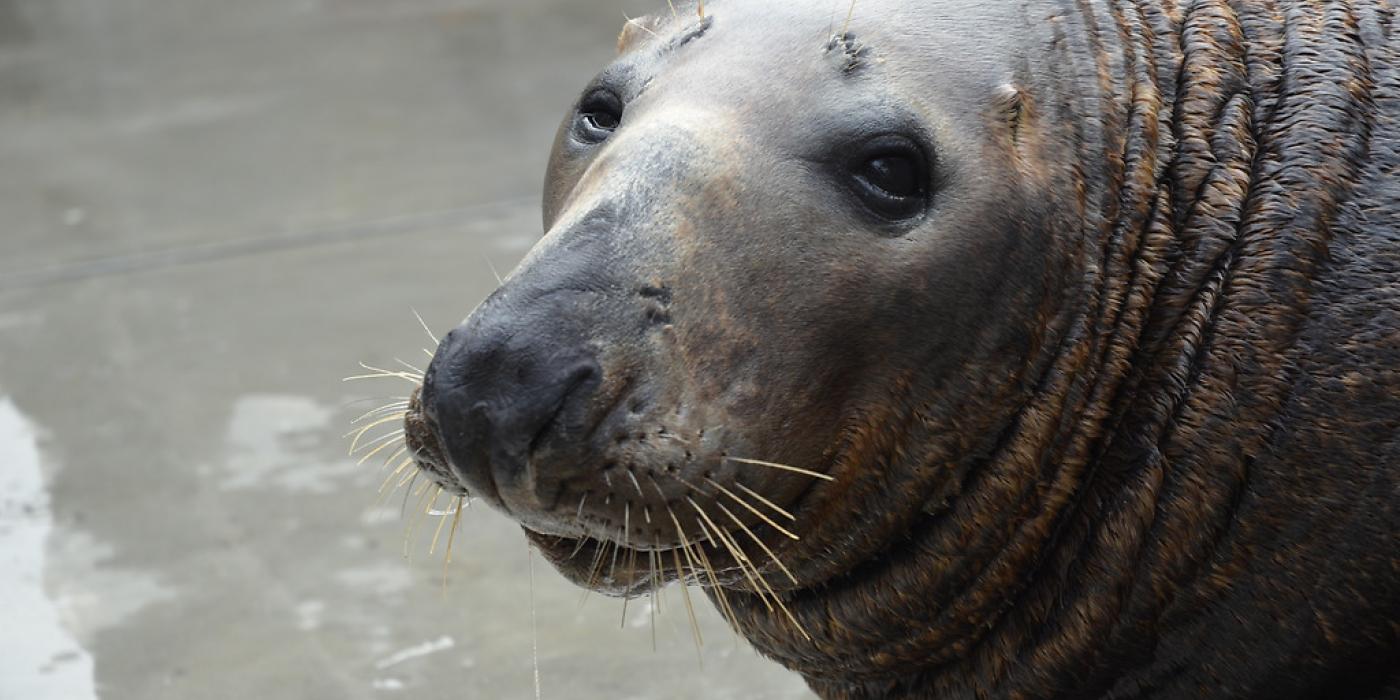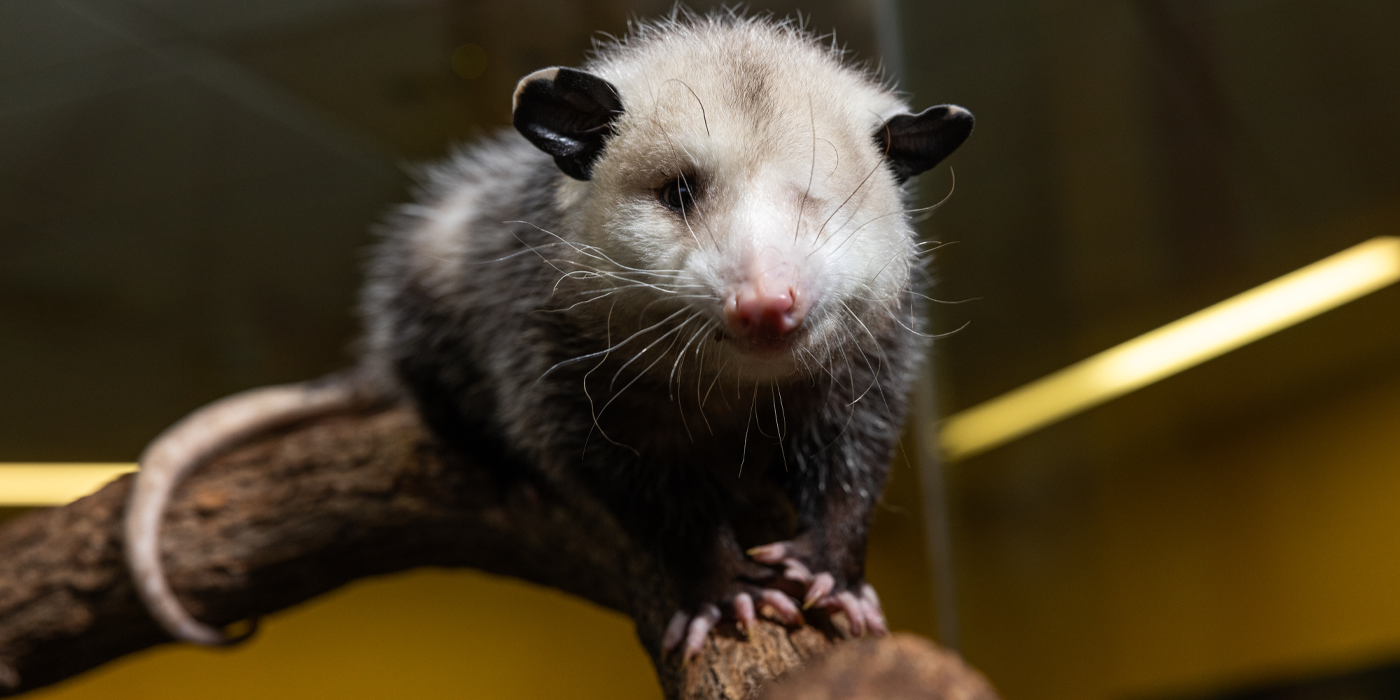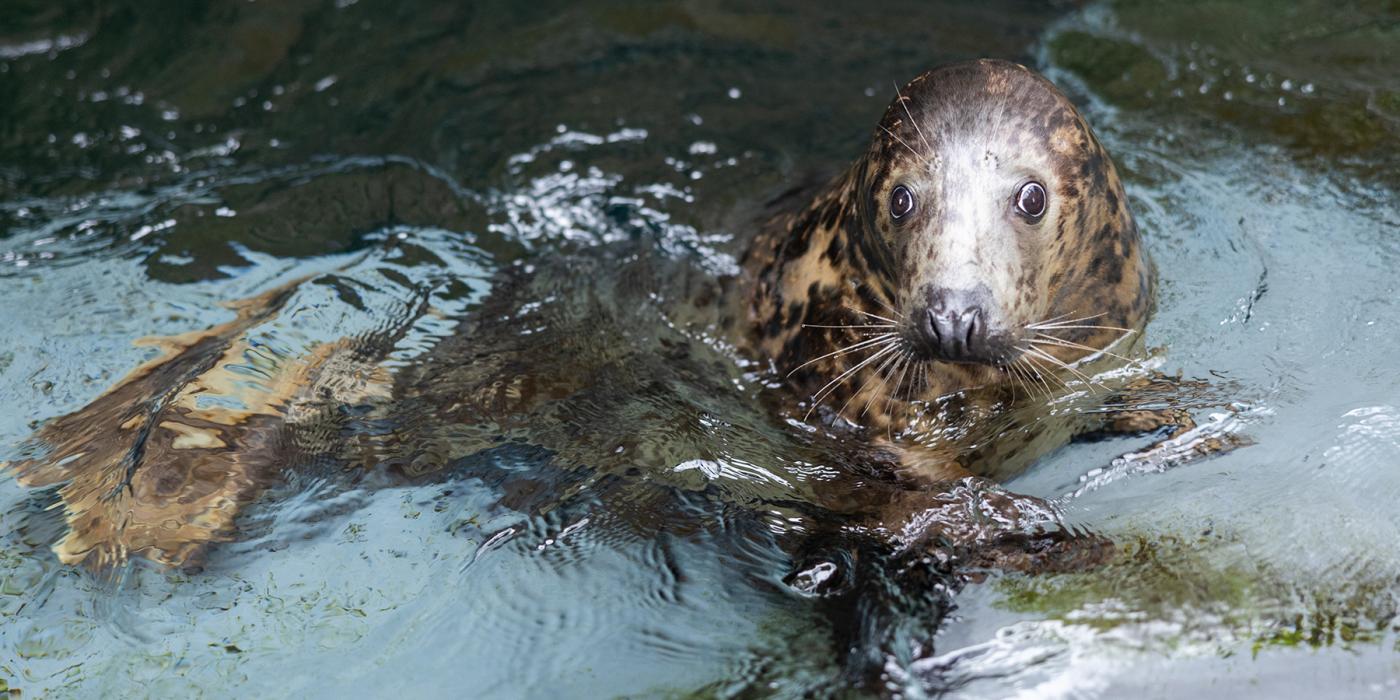A Gray Seal ‘PUPdate’
In the early morning hours Jan. 21, American Trail keepers welcomed a fifth seal to the colony! For the past two weeks, the female pup has been bonding with mom, Kara, in an off-exhibit area and growing quickly. Get the scoop on our newest baby from assistant curator Rebecca Sturniolo in this Q&A.
How is the gray seal pup doing?
She’s great! We are very encouraged that our gray seal pup is gaining weight; in fact, she’s doubled in size since birth and, as of Jan. 30, weighs a whopping 66 pounds. This is normal for gray seal pups—mom’s milk is rich in fat, which helps the infants gain around 5 pounds per day.
What is her personality like?
It’s still too early to tell. Like any newborn, she spends quite a bit of time sleeping. She also seems to enjoy swimming! Normally, gray seal pups would not enter the water until they have weaned from mom and must fish on their own. But, it’s clear that our pup is interested in the water and frequently explores her pool. The first time she went in, Kara swam next to her to ensure she was ok. She was able to dive into and get out of the pool successfully without assistance from mom.
We will get a better sense of what her personality is like when we begin training basic husbandry behaviors, such as shifting between on- and off- exhibit areas as well as scale training. However, we won’t begin training until she eats fish on a regular basis. Our first step is to acclimate her to the taste of fish before she’s fully weaned. We’ll start feeding her small fish, like capelin. It may take anywhere from a few days to a week for her to get a feel for the meal-time routine.
Will Kara and the pup stay together? Has the father met the pup?
Keepers will be watching for behavioral cues that indicate Kara is ready to separate from her pup. This tends to occur when the pup weans around three weeks of age. At that time, mom will go back on exhibit with her sister, Kjya, and our harbor seal, Luke.
Meanwhile, dad, Gunther, remains in a separate holding area behind-the-scenes. (Fathers do not play a role in raising their offspring.) We are currently in gray seal breeding season; Gunther is in rut, and Kara is very fertile right now. Gray seals usually breed in the short span of when pups are nursing/weaning. He will likely rejoin the colony in late February or early March.
What’s next for the pup?
Once the pup is eating fish on a regular basis, we will begin “howdy” intros between her and the other members of the colony with a mesh barrier between them. The seals will spend several nights in adjacent enclosures so they can see, smell and hear each other through the fence. If those interactions are positive, we will introduce them without barriers and monitor the animals closely to ensure their encounters go smoothly. Once she has met everyone, we will give her access to the exhibit so she can navigate and get her bearings and find the best ways to get into and out of the pool.
The Zoo received a recommendation to breed Kara and Gunther from the Association of Zoos and Aquariums’ Species Survival Plan (SSP). An SSP matches individual animals across the country for breeding in order to maintain a healthy, genetically diverse and self-sustaining population.
Related Species:


